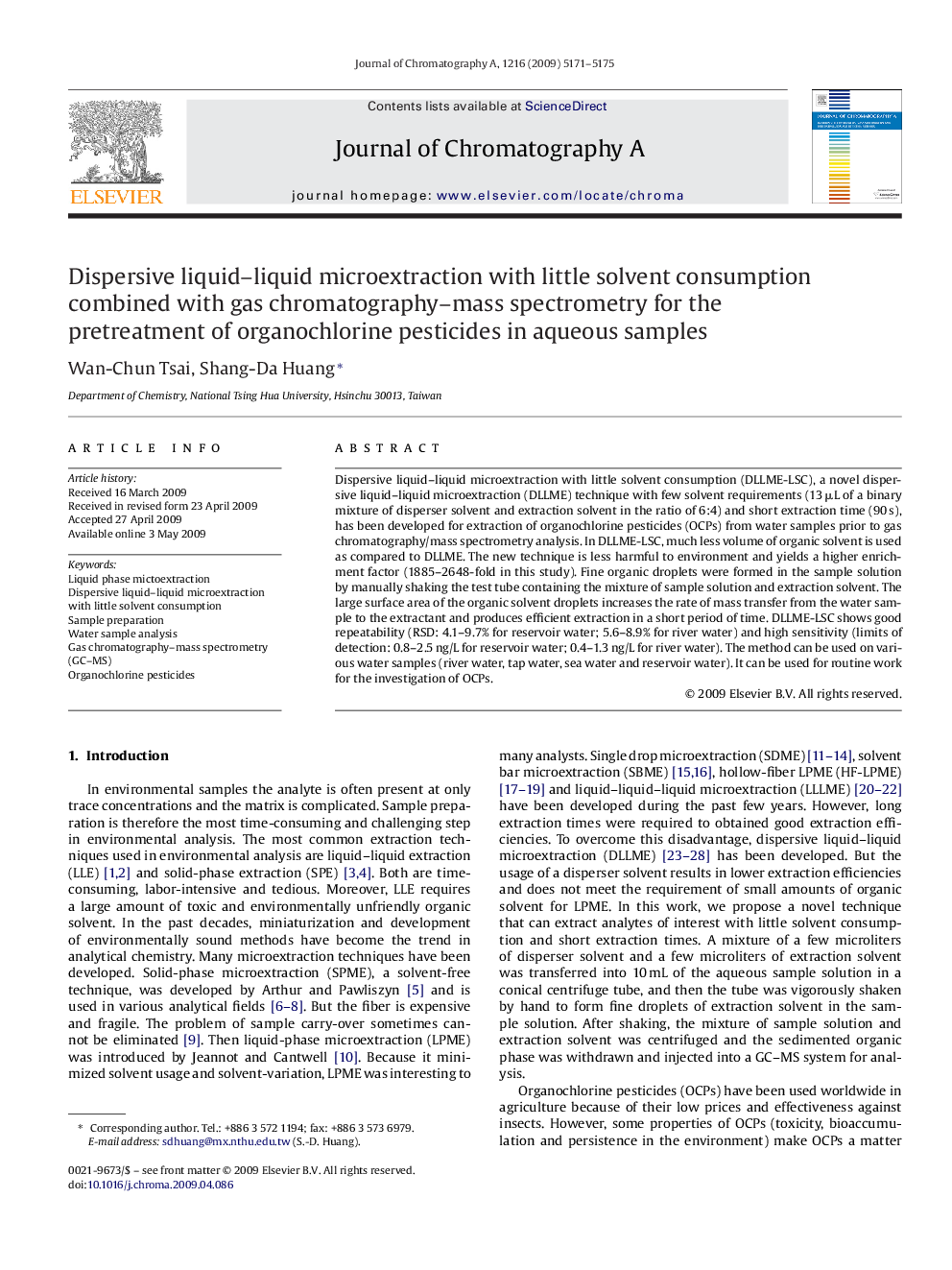| Article ID | Journal | Published Year | Pages | File Type |
|---|---|---|---|---|
| 1206142 | Journal of Chromatography A | 2009 | 5 Pages |
Dispersive liquid–liquid microextraction with little solvent consumption (DLLME-LSC), a novel dispersive liquid–liquid microextraction (DLLME) technique with few solvent requirements (13 μL of a binary mixture of disperser solvent and extraction solvent in the ratio of 6:4) and short extraction time (90 s), has been developed for extraction of organochlorine pesticides (OCPs) from water samples prior to gas chromatography/mass spectrometry analysis. In DLLME-LSC, much less volume of organic solvent is used as compared to DLLME. The new technique is less harmful to environment and yields a higher enrichment factor (1885–2648-fold in this study). Fine organic droplets were formed in the sample solution by manually shaking the test tube containing the mixture of sample solution and extraction solvent. The large surface area of the organic solvent droplets increases the rate of mass transfer from the water sample to the extractant and produces efficient extraction in a short period of time. DLLME-LSC shows good repeatability (RSD: 4.1–9.7% for reservoir water; 5.6–8.9% for river water) and high sensitivity (limits of detection: 0.8–2.5 ng/L for reservoir water; 0.4–1.3 ng/L for river water). The method can be used on various water samples (river water, tap water, sea water and reservoir water). It can be used for routine work for the investigation of OCPs.
